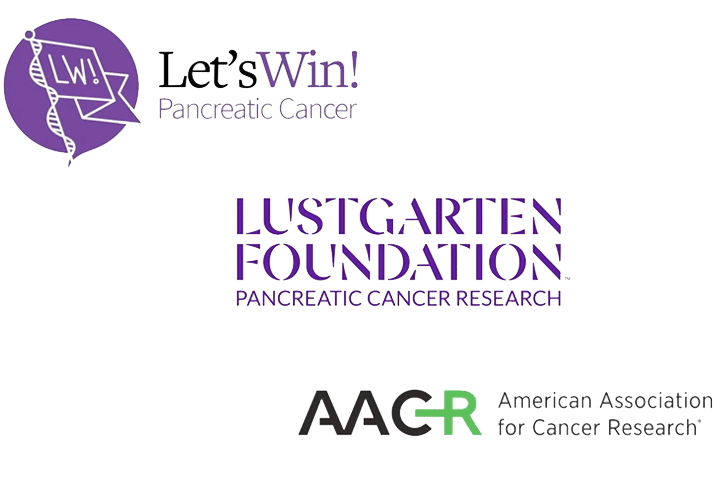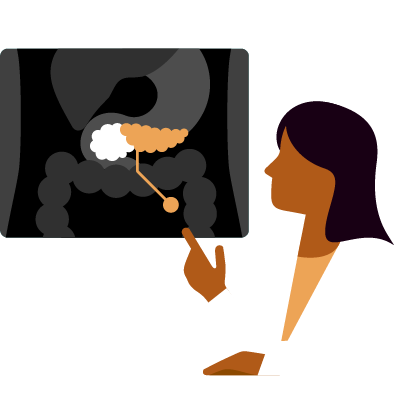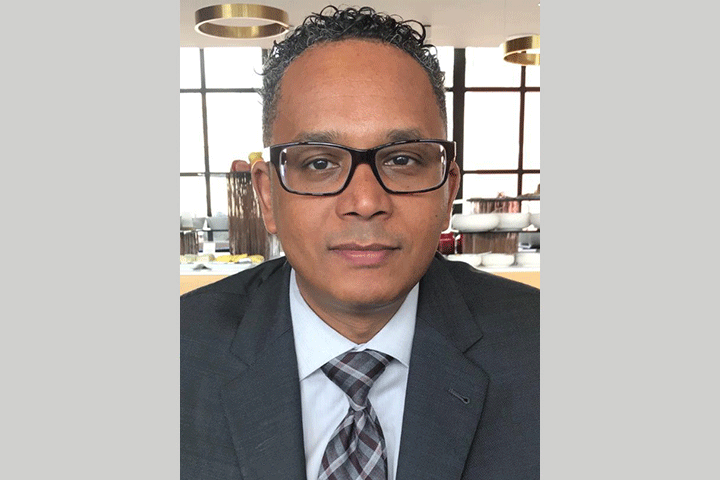2022 AACR Annual Meeting Update

For the first time in two years, the annual meeting of the American Association of Cancer Research (AACR) was held in person, a testament to the progress made in fighting COVID-19.
The event, held in New Orleans, Louisiana, in early April, brought together an array of clinicians, scientists, other healthcare professionals, survivors, patients, and advocates who shared the latest advances in cancer research and medicine. From population science and prevention to cancer biology, translational, and clinical studies, to survivorship and advocacy, the AACR event highlights some of the most promising work from institutions all over the world. There are more than 100 types of diseases called cancer, and pancreatic cancer research was well-represented in the mix. Here is a brief overview of some of the highlights in pancreatic cancer research and treatment, many of which Let’s Win has covered in prior stories and will continue to update as more data becomes available.
AI May Help Predict Pancreatic Cancer Development
An artificial intelligence (AI) model trained using sequential health information derived from electronic health records identified a subset of individuals with a 25-fold risk of developing pancreatic cancer within three to 36 months, according to results presented at the annual meeting. The study was presented by Bo Yuan, a Ph.D. candidate at Harvard University (Cambridge, Massachusetts). The first author of the study is Davide Placido, a Ph.D. candidate at University of Copenhagen (Denmark).
Recent advances in AI have led researchers to develop risk prediction algorithms for various types of cancer using radiology images, pathology slides, and electronic health records. Models attempting to use precancer medical diagnoses—such as gastric ulcers, pancreatitis, and diabetes—as indicators of pancreatic cancer risk have had some success, but these researchers sought to develop more accurate models by incorporating concepts from language processing algorithms.
The researchers trained their AI method using electronic health records from the Danish National Patient Register, which included records from 6.1 million patients treated between 1977 and 2018, around 24,000 of whom developed pancreatic cancer. The researchers inputted the sequence of medical diagnoses from each patient to teach the model which diagnosis patterns were most significantly predictive of pancreatic cancer risk. They then tested the ability of the AI tool to predict the occurrence of pancreatic cancer within intervals ranging from three to 60 months after risk assessment. At a threshold set to minimize false positives, individuals considered “at high risk” were 25 times more likely to develop pancreatic cancer within three to 36 months than patients below the risk threshold. In contrast, a model that did not take the sequence of precancer disease events into account resulted in a substantially lower increased risk for patients above a corresponding threshold.
The researchers further validated their findings using electronic medical records from the Mass General Brigham Health Care System. The differences in healthcare and recordkeeping practices between different healthcare systems required the model to be retrained on the new dataset, and upon retraining, the model performed with comparable accuracy.
The researchers found significant associations with certain clinical characteristics and pancreatic cancer development. For example, diagnoses of diabetes, pancreatic and biliary tract diseases, gastric ulcers, and others were associated with increased risk of pancreatic cancer. While this knowledge may improve traditional risk stratification in some cases, the advantage of the AI tool is that it integrates information about risk factors in the context of a patient’s disease history. The hope is this research, once evaluated in clinical trials, will lead to identifying patients with an elevated pancreatic cancer risk. This could potentially help recruit high-risk patients into programs centered on prevention and increased screening for early detection.
A Road Map to Defeat Pancreatic Cancer
David Tuveson, M.D., Ph.D., AACR president and Chief Scientist of the Lustgarten Foundation, provided insight into the current state-of-play in pancreatic cancer research. If researchers want to meet President Joe Biden’s Cancer Moonshot goals of reducing cancer mortality by half in 25 years, accelerating equitable trial design, and improving the experience of living with cancer, significant work remains.
Today, according to Tuveson, Director of the Cold Spring Harbor Laboratory Cancer Center, (Cold Spring Harbor, New York), many patients with pancreatic cancer never see a medical professional who is an expert in that disease, about 30 percent of pancreatic cancer patients never receive cancer treatment, and survival at five years is only 11 percent, which, however, is an improvement from earlier five-year statistics. Improvements to better meet the goal have been significant, with identification of the genes present in sporadic and inherited pancreatic cancer and systemic illness, such as blood clots or cachexia, for example.
There has also been progress in better understanding the so-called “seven deadly hallmarks” of pancreatic cancer: inflammation, stroma, dysregulated metabolism, metastasis, KRAS, deconditioning, and detection deficiencies. But in order to meet the challenges set forth in the Moonshot program and to make a real difference in pancreatic cancer, we need to improve prevention through better risk stratification, get a better understanding of the environmental risks, specifically mutagens and inflammagens, and run more clinical trials focused on treatment, as well as prevention through vaccine research.
Pancreatic Cancer: Why Are We Moving So Slowly?
Despite its rather gloomy title, this presentation showcased the challenges researchers face—and how those challenges can be met. It was presented by Anirban Maitra, M.B.B.S., Scientific Director of the Sheikh Ahmed Pancreatic Cancer Research Center at University of Texas MD Anderson Cancer Center, (Houston, Texas); Eileen O’Reilly, M.D., David M. Rubenstein Center for Pancreatic Cancer Research, Memorial Sloan Kettering Cancer Center (New York); and Michael (Tony) Hollingsworth, Ph.D., Dr. and Mrs. Tim D. Leon Professor of the Eppley Institute for Research in Cancer at the University of Nebraska Medical Center (Omaha).
During the session, some of the pivotal clinical and preclinical advances made in pancreatic cancer over the past two decades were highlighted. Examples of successes in the clinical arena include the availability of agents targeting defined molecular subsets such as DNA repair and microsatellite defective cancers, as well as the recent emergence of direct inhibitors of mutant KRAS. But pancreatic cancer remains stubbornly refractory to immunotherapy. However, recent innovative “platform trial” models have been instrumental in evaluating novel combinations to better understand the mechanistic basis for treatment resistance.
Additional challenges to progress include the availability of preclinical models that reflect the genomic complexity and heterogeneity of the cognate human disease, and the failure to define what constitutes a significant threshold for transitioning to advanced phase clinical trials.
The panel also discussed the importance of team science and building the pipeline of a diverse investigator workforce that can implement a “Manhattan Project” for meaningful progress in this disease.
Multi-Cancer Early Detection: Opportunity and Challenges
Nickolas Papadopoulos, Ph.D., professor of pathology and oncology at the Johns Hopkins University School of Medicine (Baltimore, Maryland), talked about the benefits and current drawbacks of liquid biopsies. First, these biopsies are safe and noninvasive and are able to be done broadly.
The challenge is to detect the so-called “needle in a haystack” tumor material, which is a relatively low fraction of materials in the blood. It is difficult to detect stage I cancers, probably due to lower numbers of tumor cells. Researchers would need a combination of markers and multi-analyte approaches to address challenges.
Current CancerSEEK data was also reviewed, including the DETECT study. Researchers will look at ways to improve sensitivity in liquid biopsies while retaining very high specificity, ways to improve efficiency in capturing DNA fragments from tumors, and other factors that will help improve the liquid biopsy’s utility in pancreatic and other cancers.
Earlier Detection of Pancreatic Cancer
Updates were provided on the CAPS study by Michael Goggins, M.B.B.Ch., M.D., professor of pathology at Johns Hopkins. The CAPS study is short for the Cancer of the Pancreas Screening Study. It is an ongoing research program developed to evaluate the effectiveness of early detection screening for pancreatic cancer in high-risk individuals, and to progress the identification of new biomarkers to improve early detection.
There was also a special session dedicated to various consortia funded by the NCI working to build cohorts and support research for the early detection of pancreatic cancer.
Intercepting Pancreatic Cancer Development: Oncogene-Targeted Immunotherapy
Elizabeth Jaffee, M.D., Deputy Director, The Sidney Kimmel Comprehensive Cancer Center at Johns Hopkins, presented data on immunoprevention and clinical trials and how vaccines may be especially efficacious for non-viral cancers. According to Jaffee, pancreatic cancer is a good model with which to develop immune prevention. Based on extensive preclinical work, there is a window of opportunity to identify individuals at early stages who have KRAS mutations. Neeha Zaidi, M.D., outlined ongoing clinical vaccine studies, including a new prevention trial for high-risk individuals.





